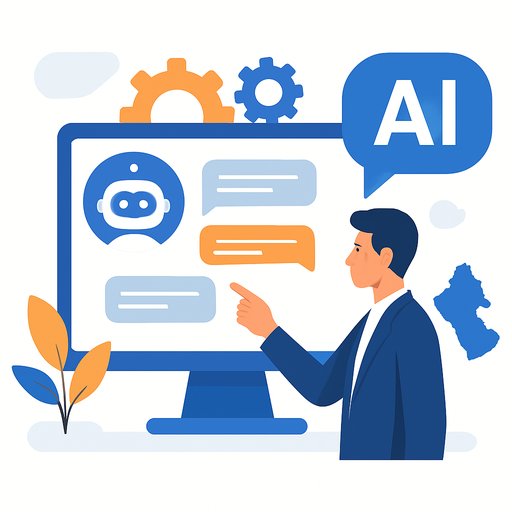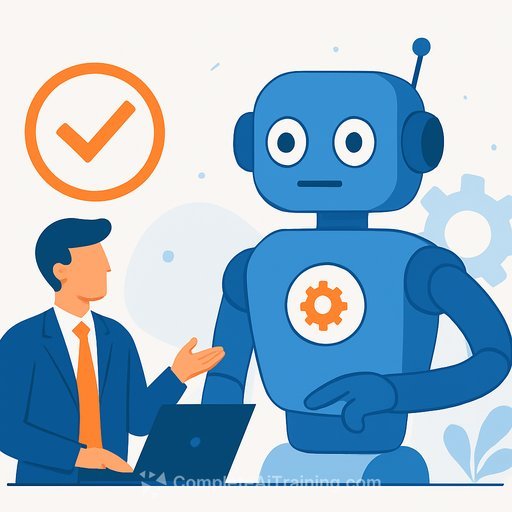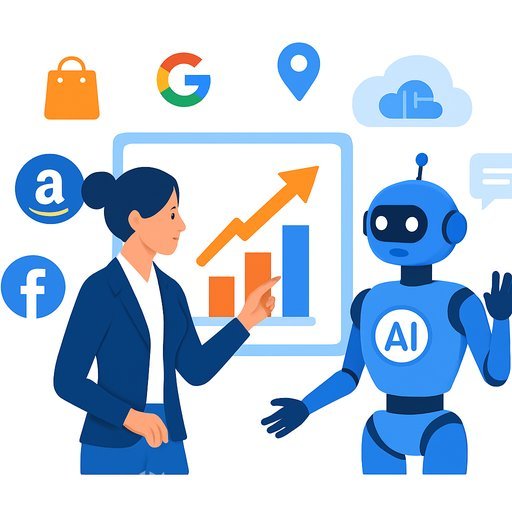Technology Is Becoming More Important Than Humans in CX - Without Replacing Them
Here's the truth many support leaders are seeing: technology is edging out people in overall importance for customer interactions. Not because humans don't matter, but because AI makes them better, faster, and more consistent.
I saw it firsthand. I emailed a retailer about a $100 price drop on a dress I'd already bought. Minutes later, I got a polite response and a credit-no friction. I replied to say thanks and left a 5-star rating for "Alicia." A week later, I asked about a return change and learned Alicia was the store's virtual assistant. The AI solved the first issue in minutes; the human resolution took a full day. That speed-and the lack of hassle-changed how I think about first-line AI.
A Quiet Flip in Priorities
In a recent global study of 656 companies, the number of leaders who said people are more important than technology for successful customer interactions dropped from 72% in 2024 to 59% in 2025.
Among the top performers using AI in CX (the "Success Group"), 58% now say technology is more important than people-up from 45% last year.
- Technology and people are both important
- In some cases, technology resolves issues without real-time human involvement
- Humans rarely resolve issues without technology involved
- AI makes humans better, smarter, faster, and more successful
That leverage is why technology is gaining priority.
Automation Is Rising-Fast
Right now, 31% of all customer interactions are resolved without human involvement. That's projected to hit 45% by 2027 and 60% by 2029. If you lead support, your job isn't to choose humans or AI-it's to design how they work together.
Why Speed Wins
57% of consumers will use an AI agent if it saves them time. Generative AI now handles natural conversation over voice and text, so more customers are open to it-especially when it just gets the job done.
In my case, I would've chosen a human if asked. After seeing how fast and clean the AI resolution was, I'm open to AI first-if it's built right and escalates smoothly.
Where AI Should Lead Today
- Order status, delivery issues, and returns/exchanges
- Price adjustments, warranty checks, and policy questions
- Account authentication and data collection before escalation
- Basic troubleshooting, appointment scheduling, and cancellations
- Proactive notifications and follow-ups
Set confidence thresholds, clear policies, and instant handoffs when the AI isn't certain. Don't force containment at the expense of trust.
Where Humans Win Right Now
- Sales and upsell conversations
- Edge cases, multi-step exceptions, and cross-team coordination
- Emotion-heavy moments: defects, outages, financial hardship
- Complex billing, legal, or compliance-sensitive issues
- High-value customers and retention saves
The Collaboration Model That's Already Here
86% of companies say AI and human agents work together to serve customers. The top ways AI helps people:
- Automating follow-up tasks (52%)
- Gathering information for humans (50%)
- Suggesting responses for humans (47%)
Nearly 60% of companies measure performance differences between AI and human agents. Today, 58% say human agents are better at addressing issues. Among top performers, 63% say AI agents are better. Expect that gap to shift as models improve and workflows mature.
Metrics That Matter (Track by Agent Type)
- Containment Rate: AI-only resolved without human
- Escalation Rate and Reasons: confidence, complexity, sentiment
- First Contact Resolution (FCR)
- Time to First Response and Resolution Time
- CSAT and short-form NPS by issue type
- Refund/Credit Accuracy and policy adherence
- Quality/Compliance Scores with human review samples
- Cost per Resolution and Revenue Influence (for sales/upsell)
Roadmap: From 31% to 60% Automated Resolutions
- Map top intents: Pull 6-12 months of tickets/chats/calls. Cluster by issue, effort, and risk. Identify quick wins.
- Start where policy is clear: Returns, credits, status, FAQs. Build guardrails and auto-approve thresholds.
- Design human-in-the-loop: Confidence thresholds, instant handoff, and full context pass to agents.
- Augment humans first: Response suggestions, summaries, next-best-actions, and auto-notes in CRM.
- Automate follow-ups: Confirmations, shipment checks, appointment reminders, and satisfaction pings.
- Train on your data: Knowledge base, policies, transcripts. Set a strict retrieval process to reduce model errors.
- Govern: Access controls, PII handling, approval workflows for refunds/credits, and quality audits.
- Measure weekly: Compare AI-only, human-only, and hybrid outcomes. Expand scope based on accuracy gains.
Three Practical Playbooks
- Price Adjustment Bot
Trigger: Customer references price drop or promo
Data: Order ID, SKU, timestamps, policy rules
Logic: Auto-approve under set thresholds; otherwise escalate with a prepared offer
Fallback: Human approval with AI-suggested response - Returns and Exchanges
Trigger: "Return," "Size issue," "Defect" intents
Data: Order history, window eligibility, SKU condition notes
Logic: Generate label, schedule pickup, push CRM updates
Fallback: Human if out-of-policy, multi-item swaps, or partial refunds - Proactive Order Status
Trigger: Delayed shipment or carrier exception
Logic: AI sends status and options (wait, reship, refund), sets expectation dates
Fallback: Human if international, high value, or VIP accounts
Agent Experience: Make AI Your Co-Pilot
- Real-time summaries and next steps during calls/chats
- On-demand policy lookup from a single source of truth
- Pre-filled case notes and dispositions pushed to CRM
- Suggested empathy statements and de-escalation guidance for heated interactions
Risk Controls That Keep You Out of Trouble
- Clear refund/credit limits with audit trails
- Restricted data exposure; redact PII in training sets
- Human review samples across channels and intents
- Version control for prompts, knowledge, and policies
- Automatic detection of low-confidence responses and instant handoff
What To Do This Quarter
- 30 days: Analyze top 20 intents, define success metrics, pick 3 low-risk automations, implement agent assist.
- 60 days: Launch AI-first on selected intents with clear handoffs, enable automated follow-ups, start weekly QA reviews.
- 90 days: Expand automations, tune thresholds, publish a CX AI scorecard by issue type, and roll out coaching based on insights.
Bottom Line
Technology is becoming more important than humans in CX because it multiplies human impact. AI can resolve a growing share of issues quickly and politely, while humans step in for higher-stakes moments and revenue opportunities. Build for speed, measure accuracy, and make escalation seamless. That's how support teams win the next phase of customer experience.
Want to upskill your team on AI for support? Explore role-specific programs at Complete AI Training or get hands-on with certifications like AI Certification for ChatGPT.
Your membership also unlocks:






